Waterfall skirts - also known as spiral skirts, ruffle skirts, etc - are a fun option to have in your design arsenal. Here, I show you how to plan, pattern, cut, and assemble them.
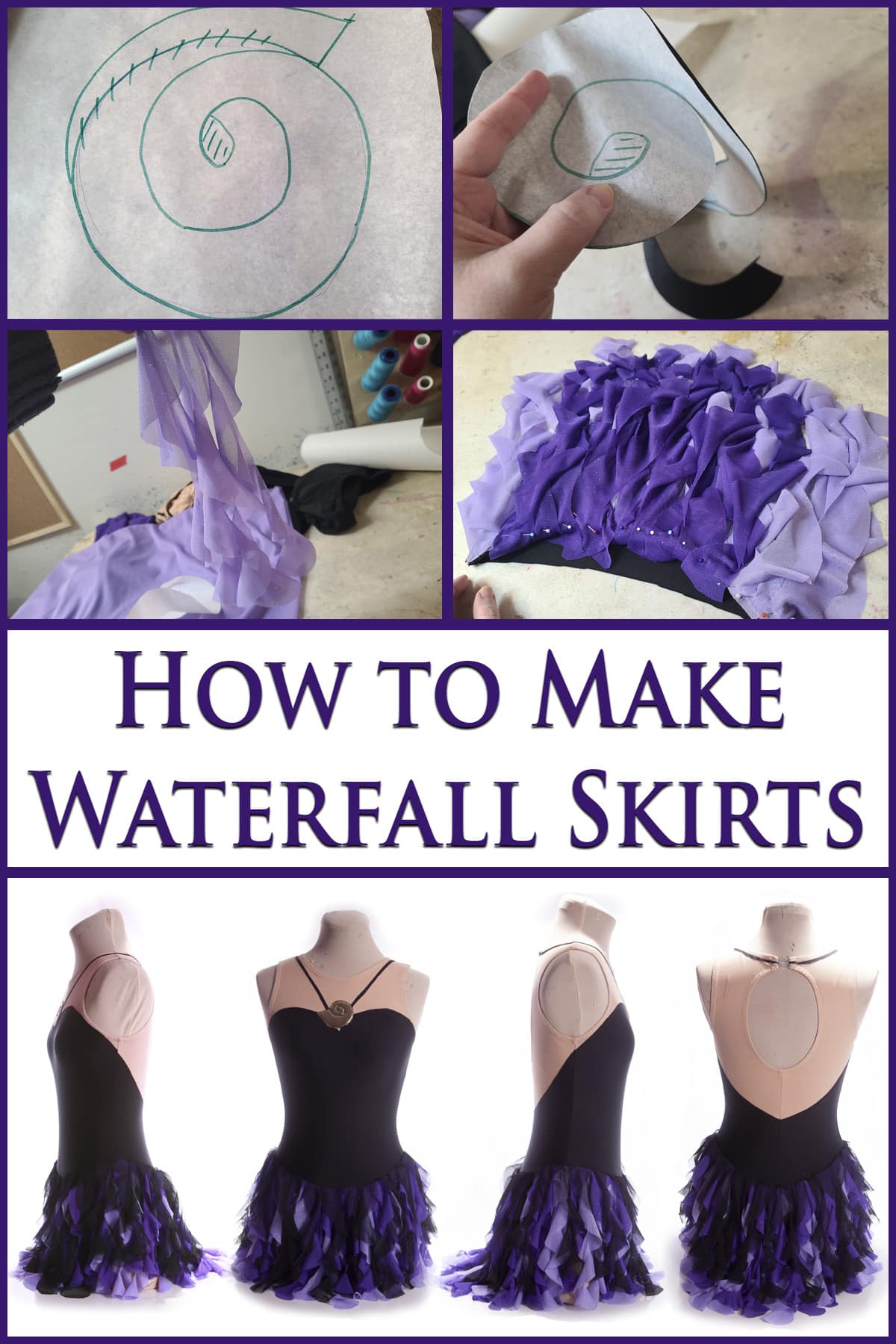
To clarify, I’m talking about the style made from many hanging spirals of fabric, rather than the “Waterfall” style of skirt that’s a 1 piece, high/low draped style of skirt.
Isn’t it fun when style names mean multiple things?
Anyway.
While this is a fairly simple style to make, there’s a LOT to say about it, so let’s get to it!
That said, I’m going to be using some basic geometry terms, so I want to make sure we’re all on the same page here.
Diameter - The measurement of a line that splits a circle in equal halves.
Radius - Half the diameter. This is the measurement from the outer edge of a circle to the center point of the circle.
Circumference - the outer edge of the circle.
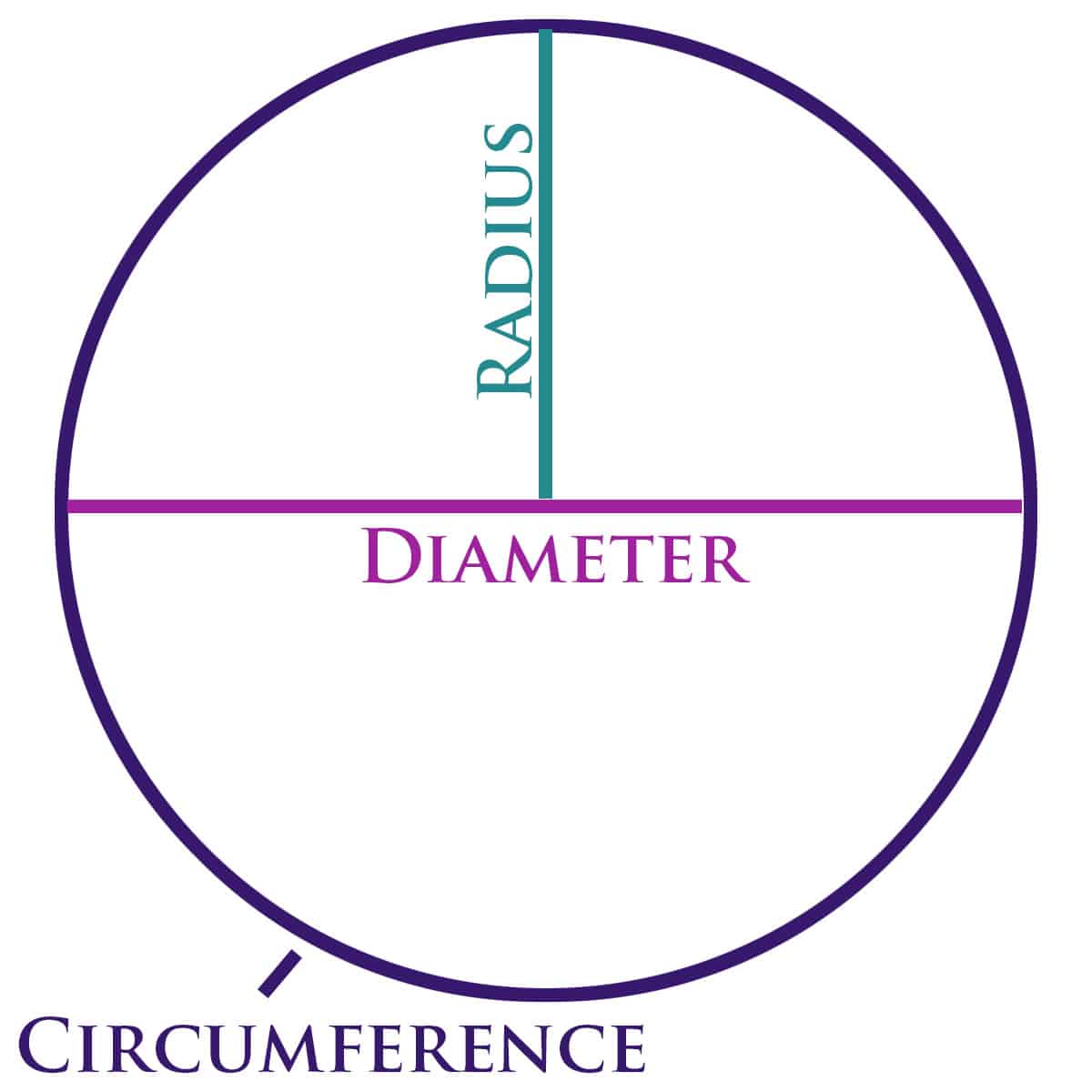
Designing Your Waterfall Skirt
Before you pattern - or even buy the fabric for - a skirt like this, you have some decisions to make.
Some main points you’ll want to decide on:
Length of the Skirt
- How long will this skirt be, from the point where it’s sewn to the garment? (Measuring from attachment, not necessarily the actual waist!)
- Will it be the same length all around? If not, what are the target lengths, where will they be?
- If the skirt line isn’t a straight line around the body - if it dips down in the front and/or back - will you want it to LOOK the same length all around?
That is to say, are you wanting an even bottom to the skirt, regardless of the shape of the waist?
Width of Each Ruffle
If you were to look at a single, hanging ruffle... how wide do you want it?
A few things to keep in mind:
- The wider a ruffle, the bigger the spiral you’ll cut (more fabric)
- A wider ruffle will need fewer ruffles to achieve the same volume as a more narrow ruffle.
- The width of a ruffle - as cut - will not be the width of the ruffle as it hangs. Gravity is a thing!
Think of a set of concentric circles (Circles of varying diameters, all centered around the same point).

Ignore the actual center point, and look at the innermost circle. Pretend you were to cut a section out of the overall circle - let’s say ¼ of it.
If you look at the second circle as a section of ruffle, you’ve got a certain amount of edge length.
However, if you were to cut it to the 3rd or 4th circle from the center, you’d have a lot more edge to it, for the same distance of inner circle.

As you can see, the outer edge - ¼ of the circumference - of each circle varies wildly. The further the circumference is from the center of the circle, the more relative outer edge length to ruffle.
When making a waterfall skirt, the pieces are cut as spirals - so the same applies. More edge, proportionately, means more “cascade” effect, as there’s more radial fullness to each spiral.
Fullness of the Skirt
- Are you wanting a lot of fullness, just some wispy ruffles, or somewhere in between?
- Will the fullness be evenly distributed?
- Will the fullness be coming from the number of pieces, the width of each ruffle, or both?
A Note on Attachment Design: This tutorial shows ruffles where the attachment edge is the full width of the ruffle.
If you have a lot of ruffles and they’re all wide, you may want to taper your spiral in a bit, as it reaches that attachment edge.
This will cut the amount of bulk in your skirt line when you’re attaching the ruffles

Design Details
- Will your skirt be a single layer, or multiple?
- If multiple, will they be the same length, or will each layer decrease in length from the layer under it?
- Will the skirt be one colour, or more than one?
- If multicoloured, will it be layers of individual colours, or all mixed together?
- When it comes to the bottom of the ruffles, do you want each ruffle to end in a point (shown), or would you prefer a rounded end?
Fabric
Due to the nature of this design, your fabric choice doesn’t need to be a stretch one.
It does, however, need to be a type of fabric that doesn’t fray.... unless you’re an absolute masochist. You are NOT going to want to hem these spirals!
(See How to Hem Spandex for hems in general, though!)
Additionally, you’re going to want to choose a lightweight fabric, as this style of skirt can get really heavy, really fast.
Look to using sheers and very lightweight fabrics - I don’t recommend using actual tricot / spandex for this.
Also, keep in mind the way you want the falls to look.
Something like a stretch mesh will gracefully collapse over itself, while some of the stiffer, non-stretch sheers will have a lot more structure to their ruffles - this will also contribute to fullness.
Patterning the Spirals
When it comes to patterning - generally speaking - you can take your set of measurements, and use them to directly pattern exactly what you want.
As an autistic who’s into numbers and such, this may be why I enjoy patterning. I like consistency, I like expected outcomes to set work.
That said, I take more of a chaotic approach to patterning spirals for these skirts: basically just spitball it.
Know approximately what you’re going for, draft it up, and see how close you get. Basically “throw something at the wall and see if it sticks”.
The main thing you’ll want to know before patterning is the width of the ruffle, as you’ll build your mocl-up around that measurement.
From there, it’s just a bit of trial and error.
If you want less chaos / trial and error, here’s a link that talks about determining the Length of an Archimedean Spiral. Have fun!
What You’ll Need
If you haven't read my post on Spandex costuming tools and supplies, I recommend doing so!
As far as this project specifically, you'll need:
Exam Table Paper
As with all of my patterning, I use exam table paper, for a few reasons:
It’s cheap, convenient, strong enough, and also translucent. That last property is important, as you’ll want to trace your final spiral a few times - more on that in a bit.
(Note: Sometimes, you’ll be given a choice of 2 papers. One is cheaper and uncoated, and the other is slightly more expensive, and is coated. Go for the cheaper roll, as wide as you can. 21" is great, 18" will usually do. If you do this as a business, you’d be best off to buy it by the case - usually 12 or 24 rolls.)
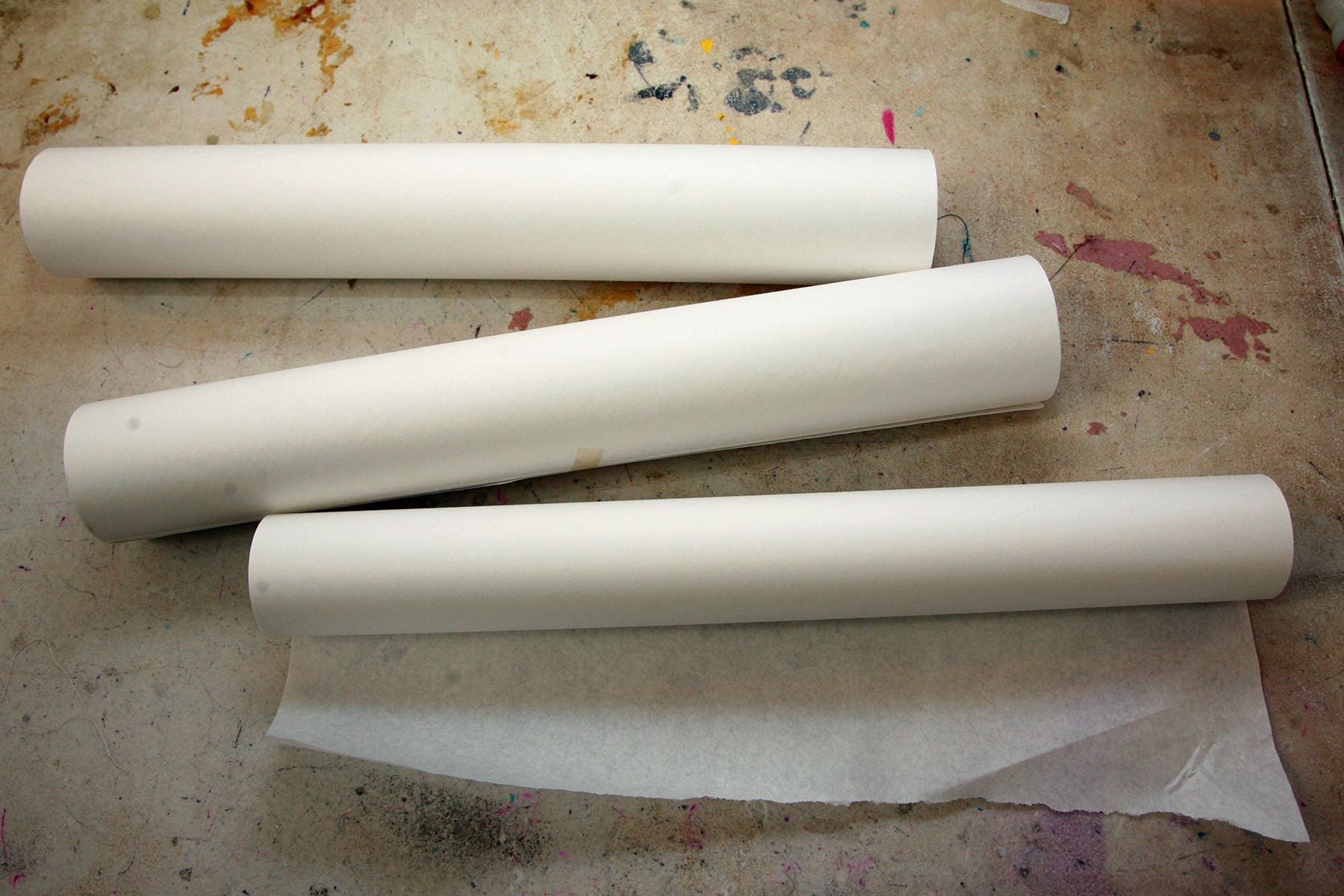
Pen or Pencil, and a Marker
I like to use 2 drawing implements - a pen or pencil for the initial bit, then a marker.
Due to the nature of this kind of patterning, there are going to be lines drawn that are guides for subsequent pattern marks, but won’t be used as CUTTING lines.
Using a marker to draw over the actual cut lines prevents certain types of mistakes from happening!
Ruler / Measuring Tape
This is optional, as you generally don’t need an EXACT measurement for your ruffle width - you can generally eyeball it.
If you know you want a 2" ruffle, though... a ruler can help you check your work as you go.
Additionally, a measuring tape can help you check your initial mock up to see if you’re at least in the right ballpark for length.
Waterfall Skirt Patterning Technique
There are two main ways to pattern a full spiral, plus a 3rd option as a more simple version of the concept:
Inside-Out Spiral
- Draw a circle that has a diameter that is the same measurement as you’d like the ruffle width to be.
- Draw a short line from the circle outward. Mark a point that is the ruffle width away from the circle.
- Mark a spot on the main circle that is directly opposite the line you just drew.
- Along the outer edge of the circle, mark a point that is halfway between the line you drew, and the mark you just made.
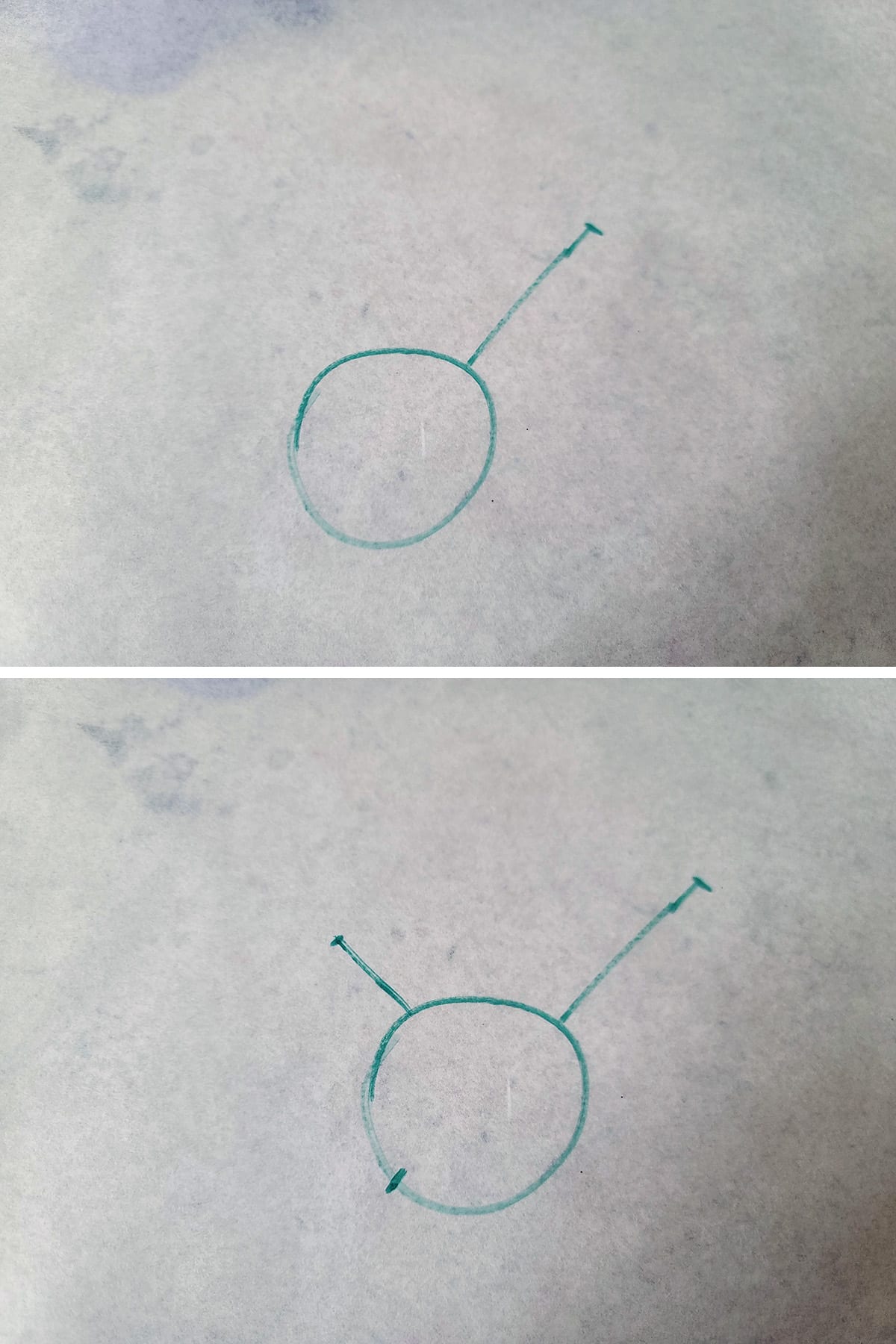
- At this spot, draw a short line out from the circle. Mark a point that is HALF the ruffle width away from the circle.
So, if you wanted a 2" wide ruffle, the initial circle would be 2", the first line you drew out would be 2" long, and the second would be 1".
- Draw an even curve from the mark on the first line, tapering it in to the mark on the second line.
- Draw an even curve from the mark on the second line, tapering in to the mark on the circle.
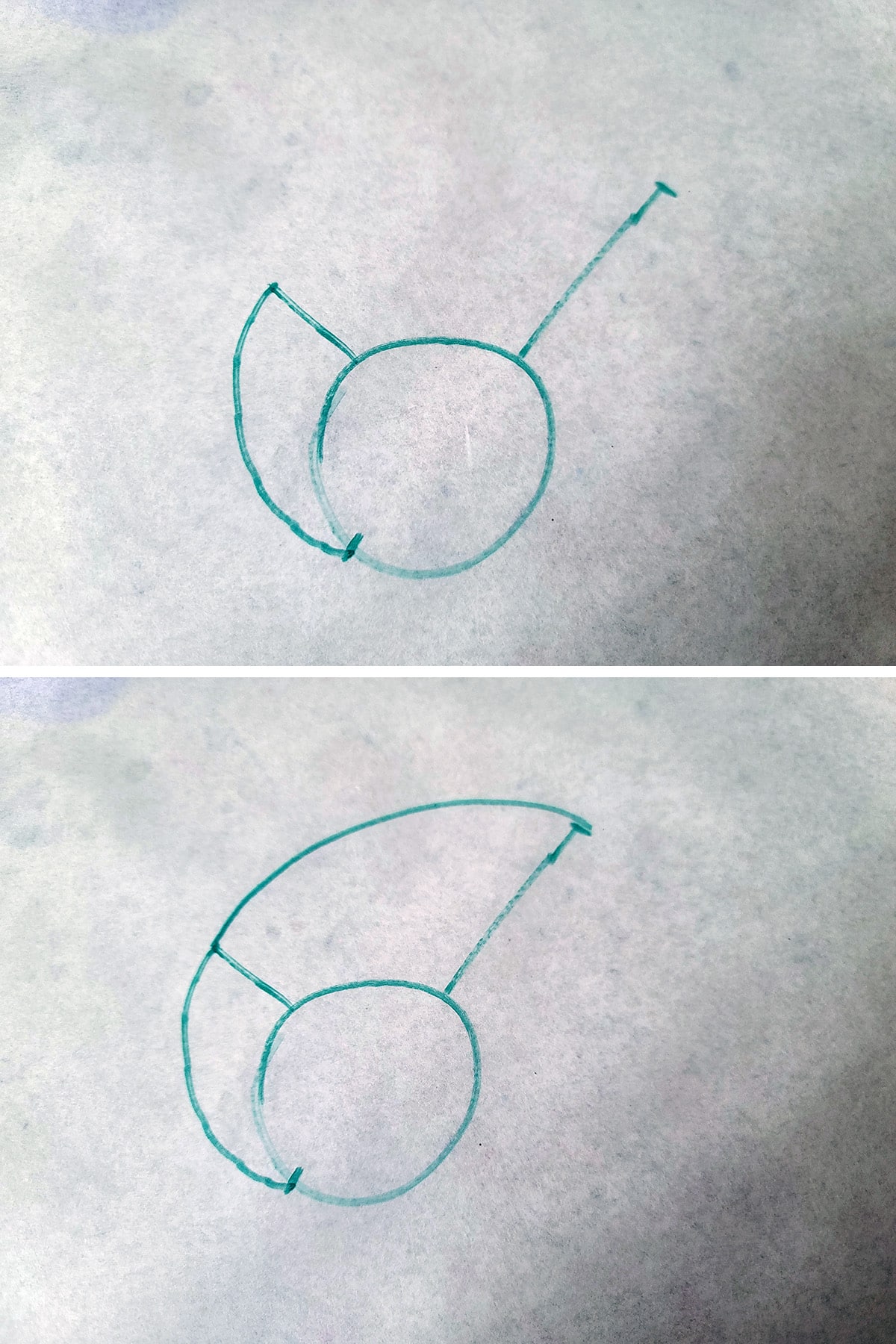
- Starting at the mark on the first line and moving out from the curves you just drew, continue the curve around the circle, staying your ruffle width (2", in this case) from the outermost line.
- As you approach the start point of your curve, keep your line the appropriate width away from the new line, rather than the original circle.
- Continue that way as long as you think you’ll need.
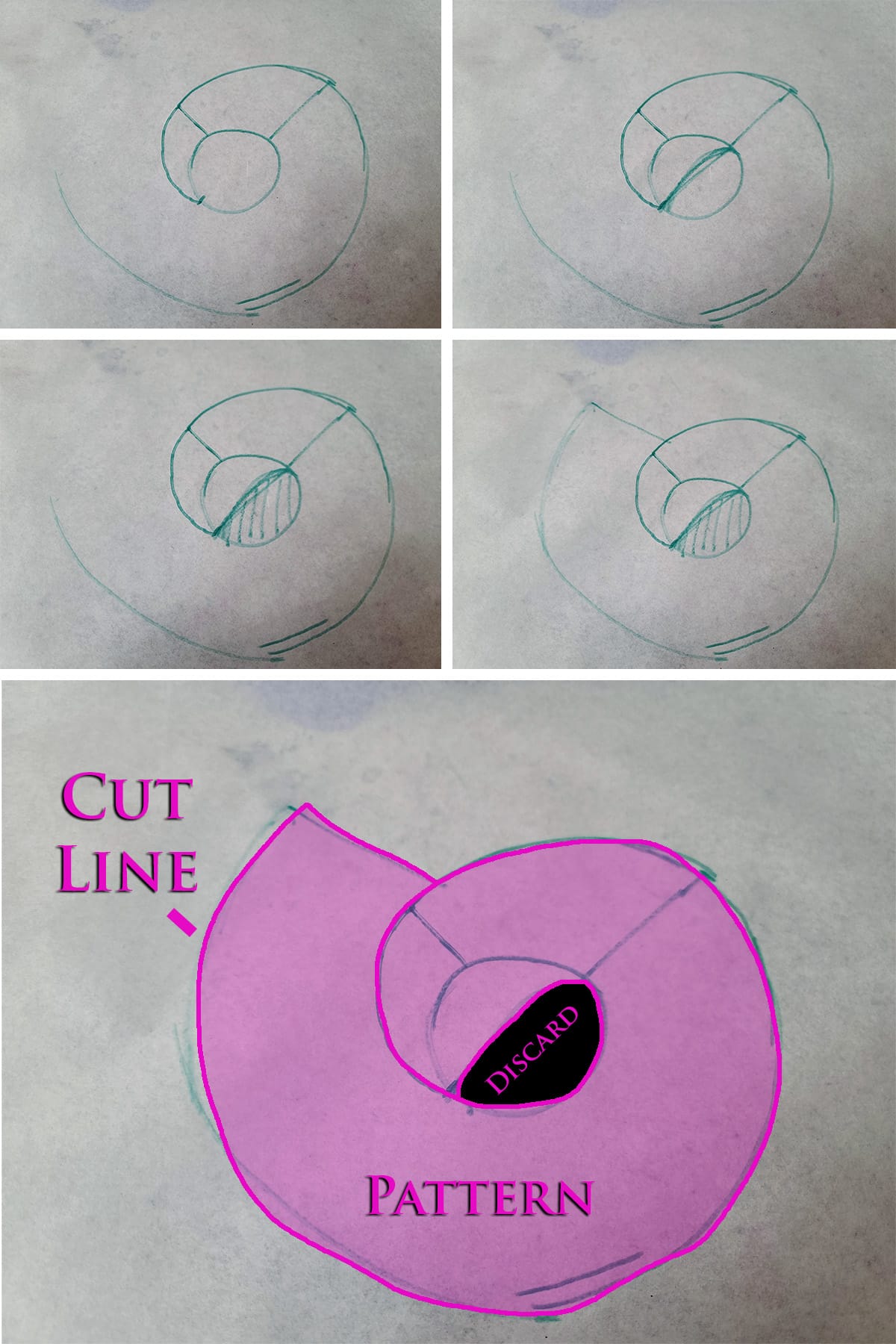
As a rough guideline, you can measure the inner edge of the spiral, from the outside all the way in.
That will give you the approximate length, not accounting for any stretching that may occur.
- If you want a rounded bottom to your ruffle, round the center peak that’s formed when you end your spiral. If you want a point, just leave it as-is.

Rounding the bottom of the ruffle (the centermost point).
- Use another piece of paper to trace this pattern, set it aside. This is what you’ll alter, should you decide that you need to adjust this pattern after trying it out.
Outside-In Spiral
For the sake of demonstration, I’m going to use 2" as an example - we’ll say this is how wide the ruffle is going to be.
Just use your desired ruffle width in place of that.
First, guesstimate how many rounds of spiral you’ll need. (This is definitely the more chaotic of the two options, btw.
Let’s say I’m guessing I’ll need 3 rounds.
- Draw a circle that is (rounds) x (width) x 2 + (width) in diameter In the case of this example, that would be 3 x 2 x 2 + 2, or 14.
So, draw a circle that has that measurement - 14 in this case - as the diameter.
- Draw a short line out from the circle, marking a point that is with width (2" in this case).
- Mark a point on the circle that is directly across from that line.
- Mark a point on the circle that is halfway between the original line and the point you just marked.
- At this spot, draw a line out from the circle, and mark a point that is HALF the ruffle width away from the circle - 1" in the case of this example.
- Draw an even curve from the mark on the first line, tapering it in to the mark on the second line.
- Draw an even curve from the mark on the second line, tapering in to the mark on the circle.
- Starting at the mark on the circle and spiraling in from the curves you just drew, continue the curve around the circle, staying your ruffle width (2", in this case) from the outermost line.
- As you approach the start point of your curve, keep your line the appropriate width away from the new line, rather than the original circle.
- Continue that way until you near the center. As you approach the center, you’ll end up with dead space that’s sort of an oval / teardrop, depending on how you taper in.
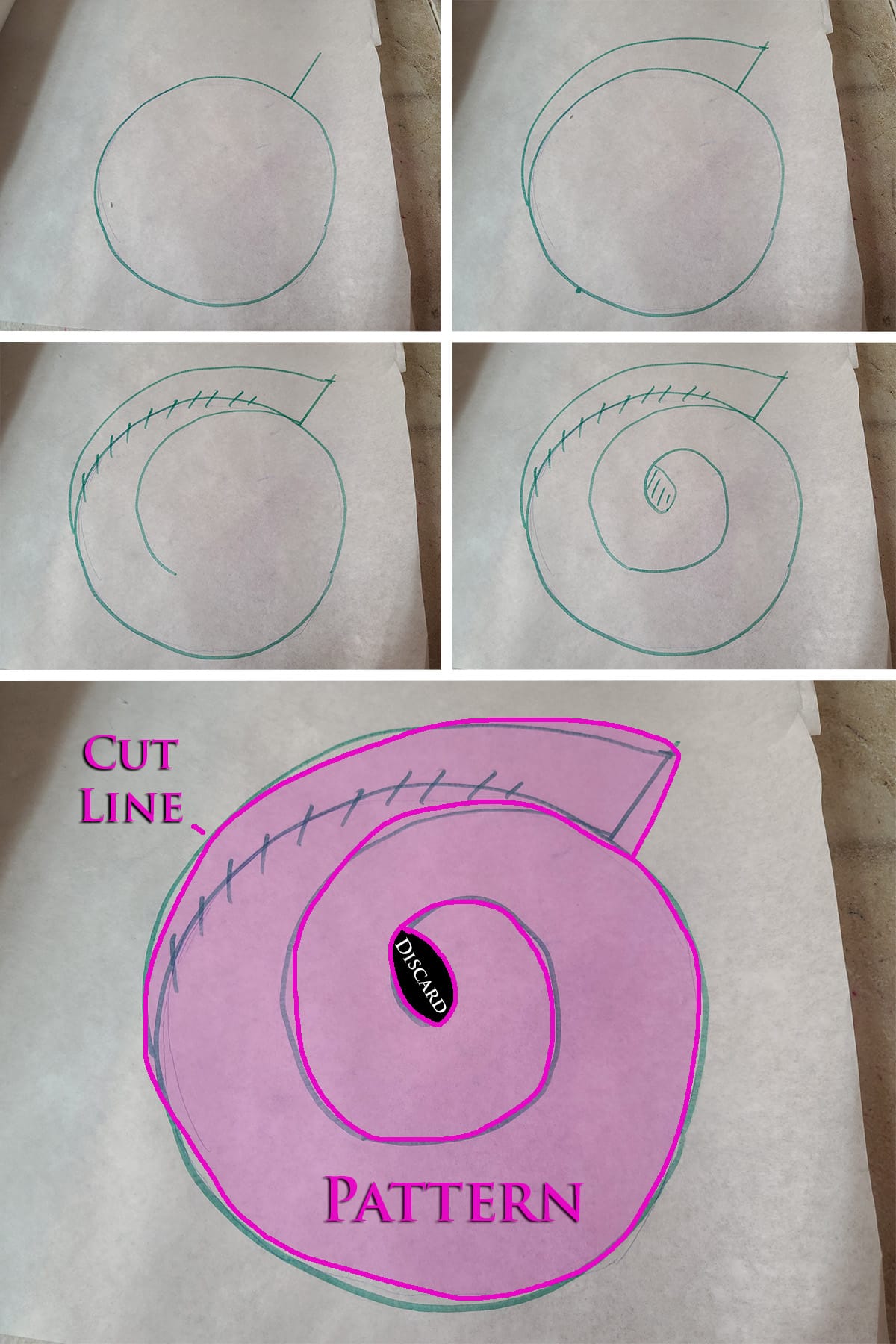
Note: I eyeballed this one, rather than getting more accurate with marking measurements. Do whatever feels right to you!
- If you want a rounded bottom to your ruffle, round the center peak that’s formed when you end your spiral. If you want a point, just leave it as-is. (Diagram in the previous section).
- Use another piece of paper to trace this pattern, set it aside. This is what you’ll alter, should you decide that you need to adjust this pattern after trying it out.
Radius Cut Circle
This way isn’t exactly the same technique, but achieves sort of a similar effect.
Due to the nature of this one, I usually only use it for shorter lengths of fall.
- First, determine the length you’ll need. For this example, let’s say 8".
- Cut a circle that has a diameter of that length. Mark the center point of the circle.
- Cut a circle out of your test fabric. Make one cut from the outer edge, just to the center point of the circle.
- Fold the circle in half. From the cut point on the outside, cut a bit of a teardrop shape out, basically rounding out the center of the circle a little.
- If you’re wanting the bottom edge of your ruffle to be rounded, round off one of the points created at the edge of the circle. The other point will be attached to the garment.

Test Your Work
Whichever way you patterned, you’re going to want to cut a test piece out and see how you like it.
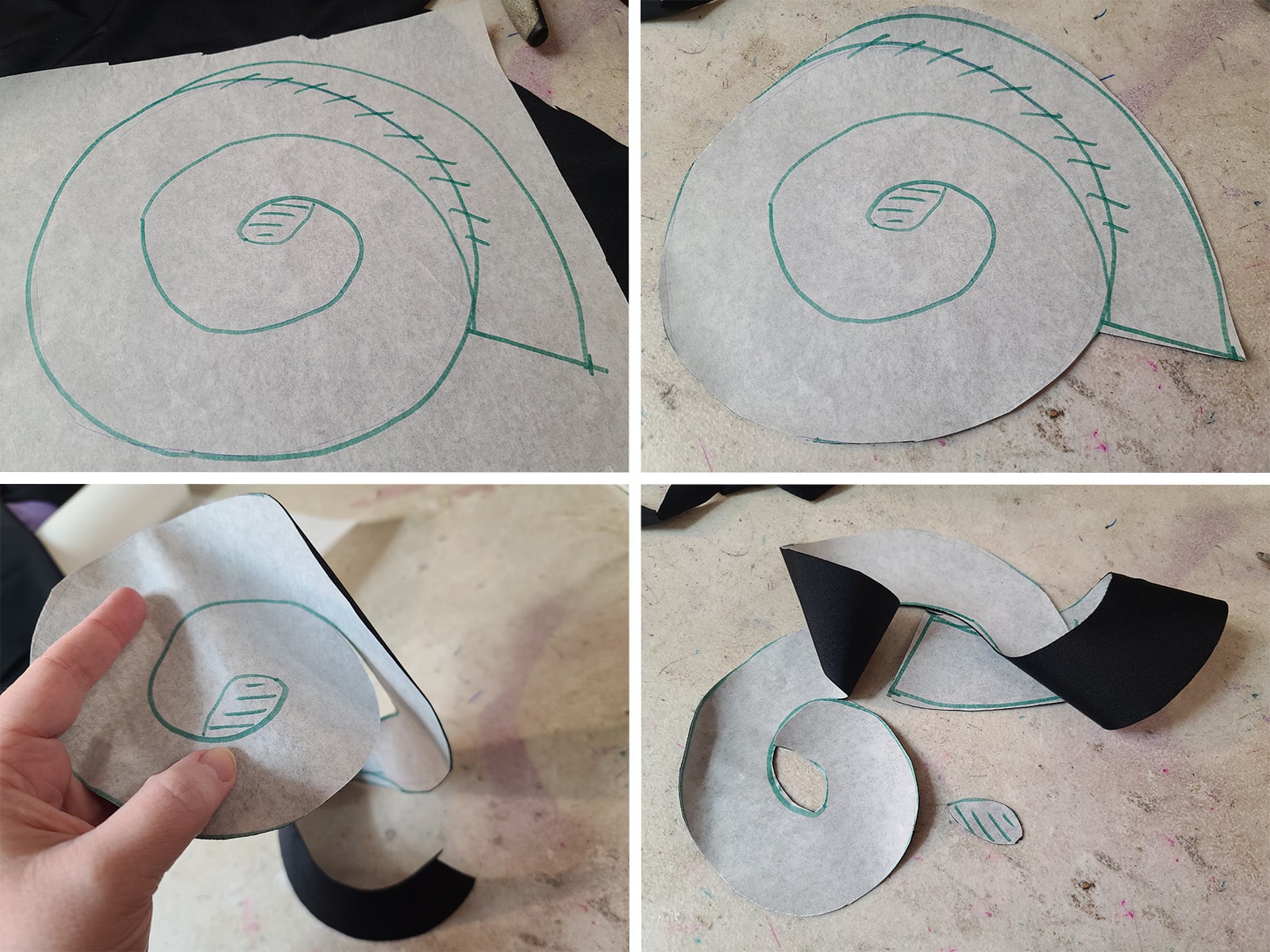
I used one of the two original patterns to cut a test spiral from black spandex.
I recommend cutting it out of fabric that is similar to your planned fabric, if not the actual fabric.
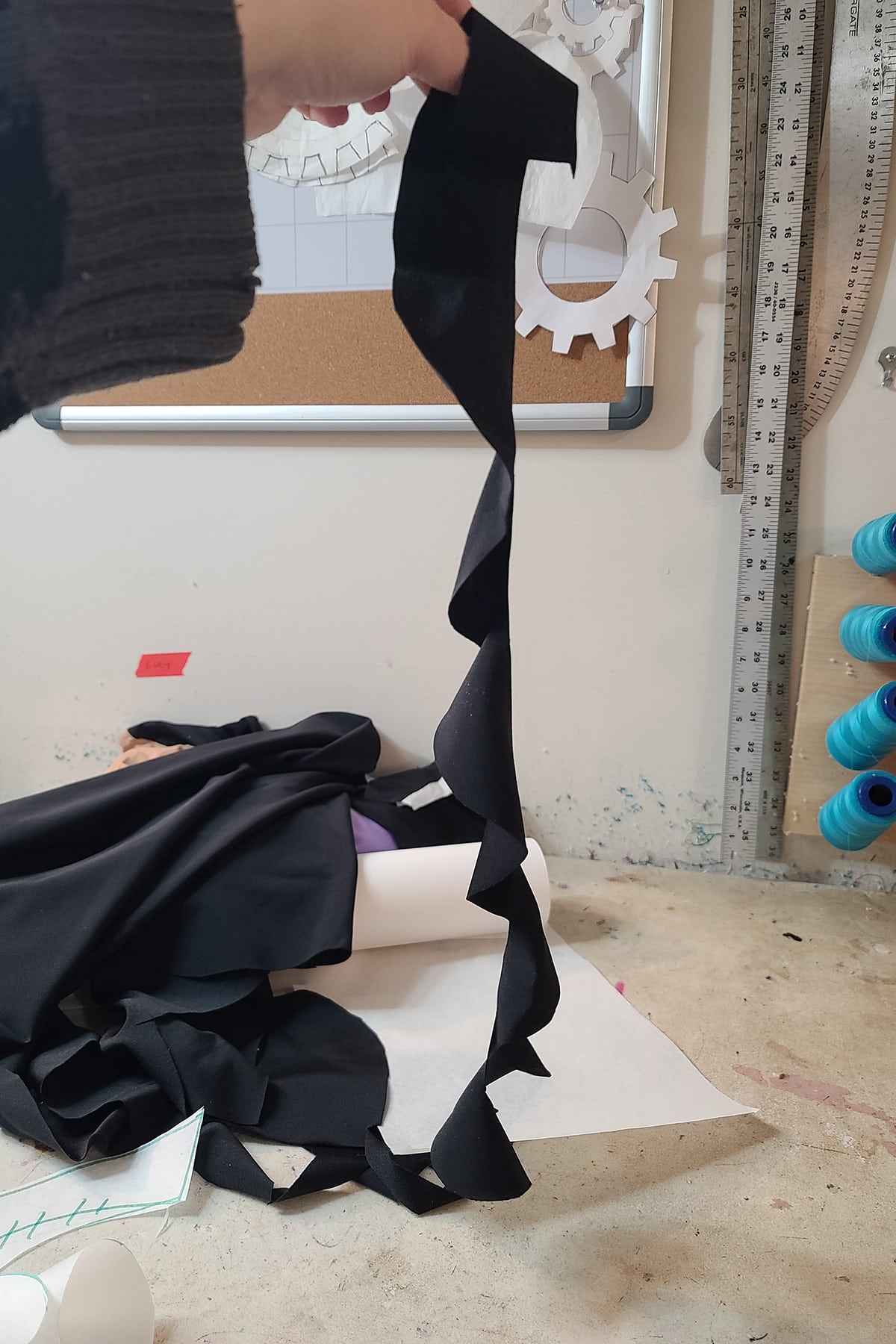
It's not exactly the same fabric, but gives me a good idea of how the initial spiral pattern will work.
Different fabrics will have different stretch, will fall differently - it’s good to get an actual idea of what you’re dealing with.
Adjust as Necessary
- If your ruffle is too long, simply cut the required amount off the outside of your spiral, as shown.
- If your ruffle is too short, go back to the tracing of the original trial pattern. Continue the outer edge of your spiral for as long as you think you’ll need it.

As a guide - the edge of the ruffle closest to the inside of the circle is what determines the length you’re adding (not accounting for stretch/settling).
That is, if you need to add 3" of length, you’ll want to add enough spiral that the inner edge of it is 3" long - the outer edge will be longer.

The pink line is what you'd measure to determine the approximate length of your ruffle, once it's unfurled.
- If your ruffle is more full than you pictured - or not as full as you’d like - start over from the beginning, taking into account the new desired width of the ruffle.
Cutting the Spirals
This is the absolute worst part of making this style skirt - you’ll probably need several dozen spirals cut, at minimum.
As the cutting doesn’t really have to be perfect, I’ll layer my material and cut several at once - but feel free to cut one at a time.
Use really sharp scissors.
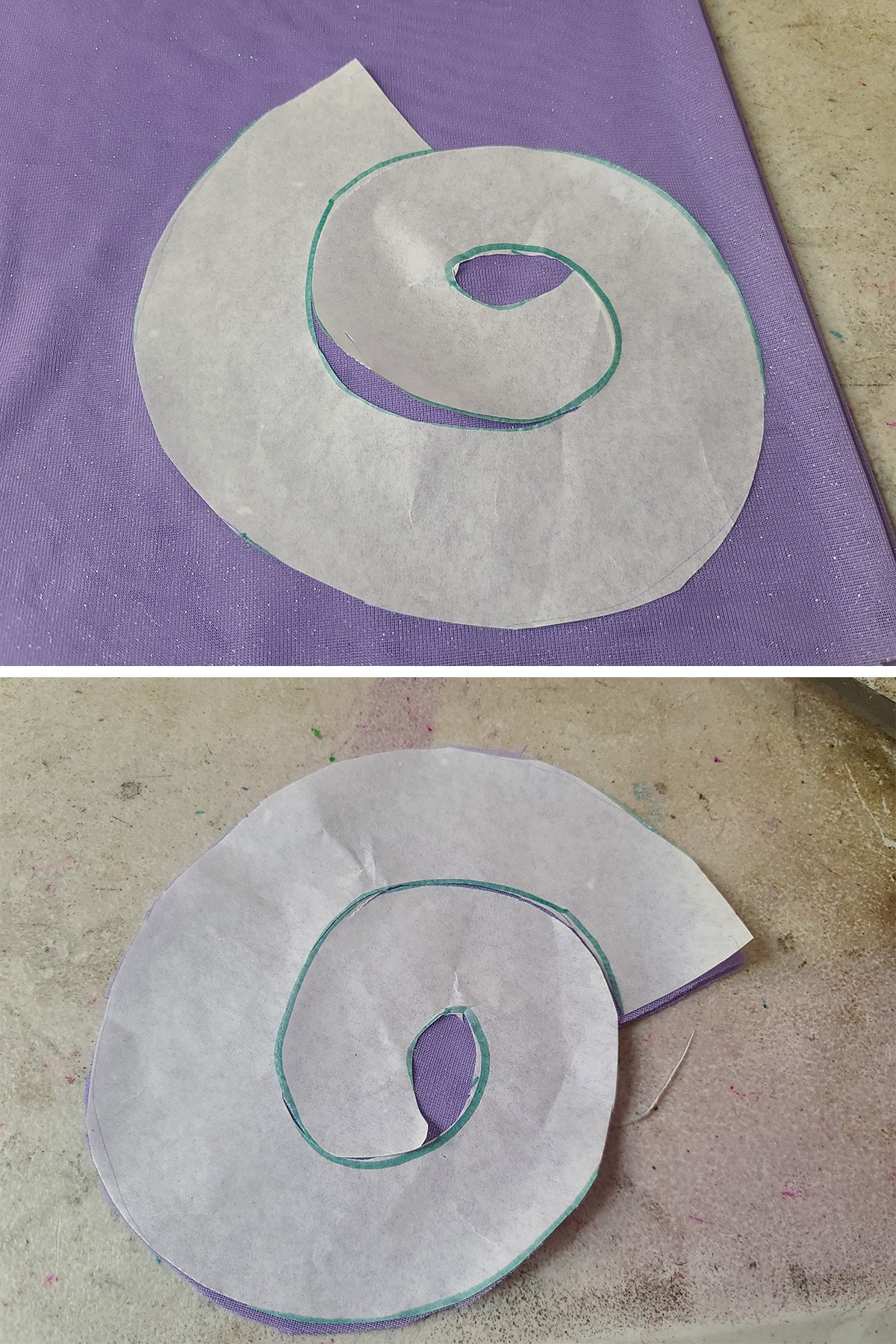
Tips:
- Spraying your pattern with a bit of repositionable spray - like 505 Temporary Spray Adhesive - can help a lot. Let it dry well, and blot it with fabric or paper towel to “dull” the stick a bit - you don’t want it to transfer to the fabric you’re cutting.
- Another option is having a cutting mat with a bit of residual stickiness from using Temporary Spray Adhesive, and laying down a flat, single layer of your fabric.
Smooth everything out, before applying your (ideally sticky) pattern.
From there, you can use a small rotary cutter to cut out your spirals.
- Always cut more spirals than you think you’ll need.

Assembling Waterfall Skirts
Whatever you’re attaching this to, have it fully assembled.
In the case of this demonstration, it’s a skirt on a skating dress. The bodice is fully assembled (though not crystalled), and so is the brief.
All elastic has been inserted and finished off, before applying the waterfall skirt.
How you arrange your spirals is going to depend on what your design plans are.

- If doing obvious layers - whether featuring differences in colour, length, or both - I like to pin the first layer down, then the second, and so forth.
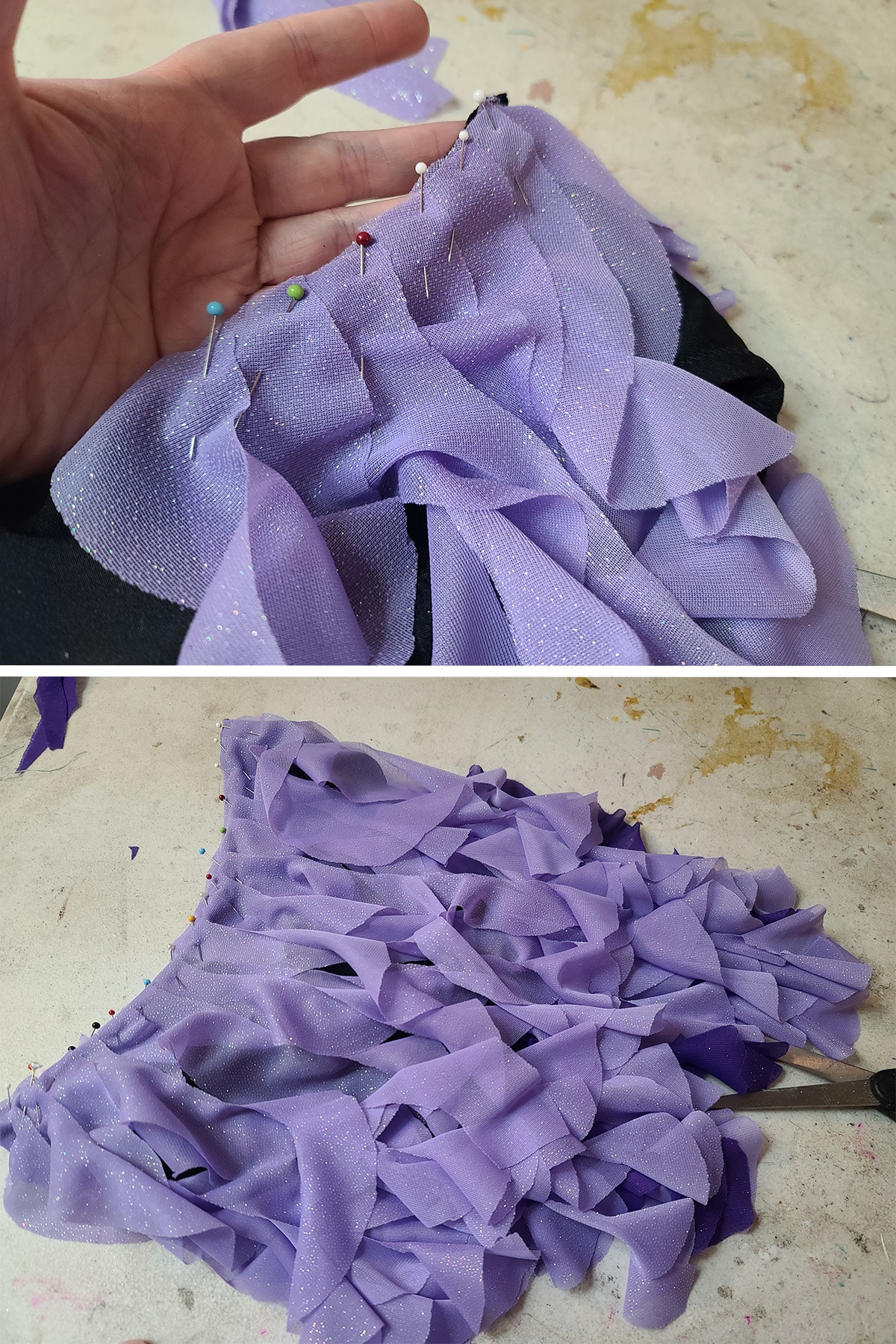
As I come around with each subsequent layer, I remove the pins from the first - as I go - and repin through the new layer AND the previous layer(s), as well as the body of the garment.

- If doing varying lengths to the skirt - in this case, longer in the back - I’ll cut and place the longer pieces first, even if multiple layers.
Once I’ve cut and placed all the pieces I need at the longest length, I’ll trim a bit from the pattern, cutting and placing everything I need at the next length, and so forth.
- For varying lengths, Sometimes I’ll cut all the same length - the longest - and just adjust length when I pin. I’ll leave a bit of overhang for shorter ruffles, and just trim it as I go.

This is what it looks like when I shorten as I go, then trim.
- However you do it, you’ll want to overlap your pieces a bit. For this one, I layered the light purple pieces over ½ of the piece beneath it, and the brighter purple over about ⅓ of the piece before.
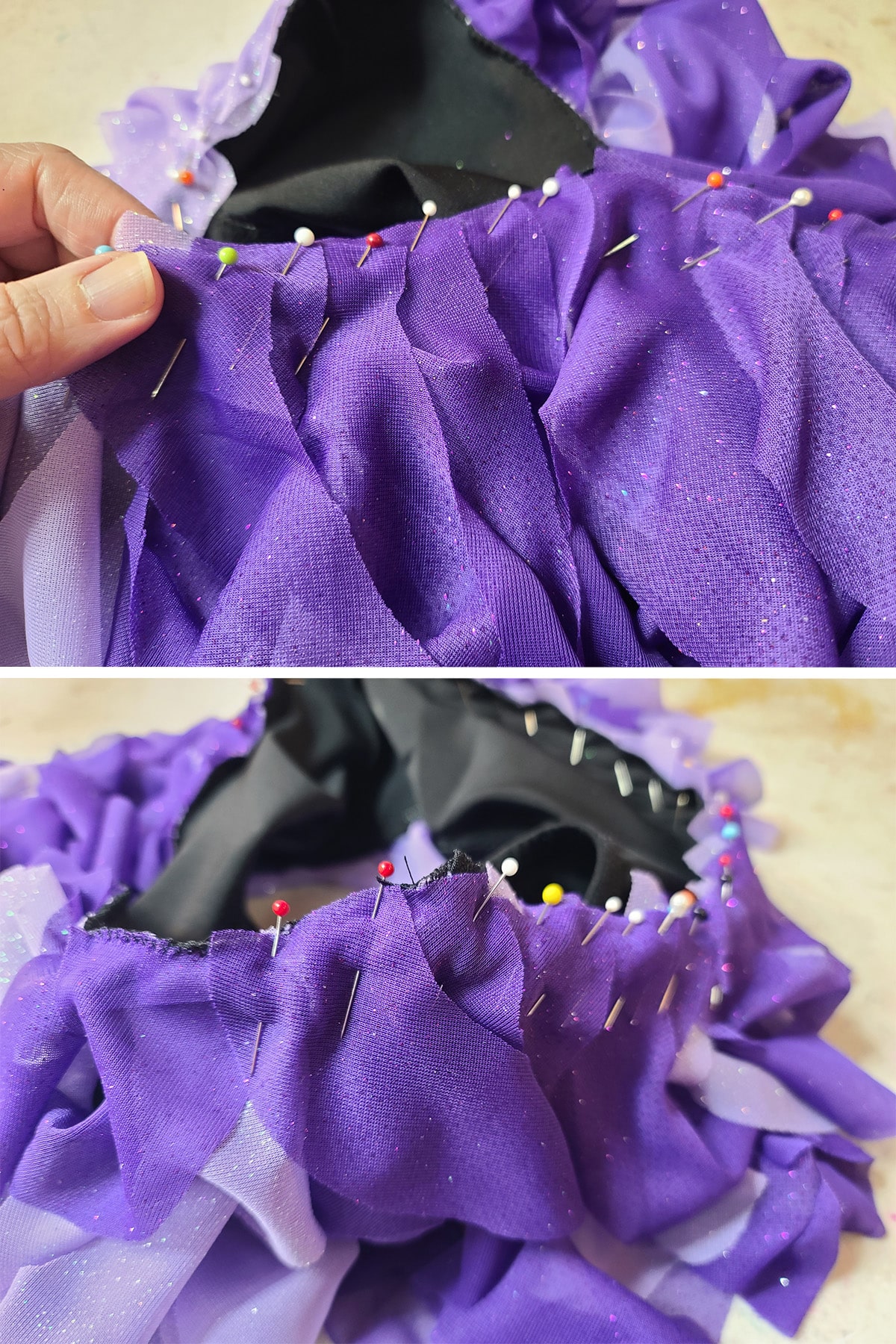

I'll usually zig zag after every 2 rows, when there are more than 2. It can be difficult to keep lower layers in check, if you go much beyond that without stitching down.
By the time I got to the black layer, I overlapped by just a bit.
How you do this will depend on what effect you’re going through, and how much bulk you’re ready to deal with in the seam.
- If I’m doing a skirt that’s all one length, and either one colour or multicoloured and randomly placed, sometimes I’ll skip the pinning altogether, and just piece / stitch down at the same time, at the sewing machine.
Once your layers are all pinned, use a wide zig zag - medium stitch length - to stitch through all skirt layers, attaching it to the garment.
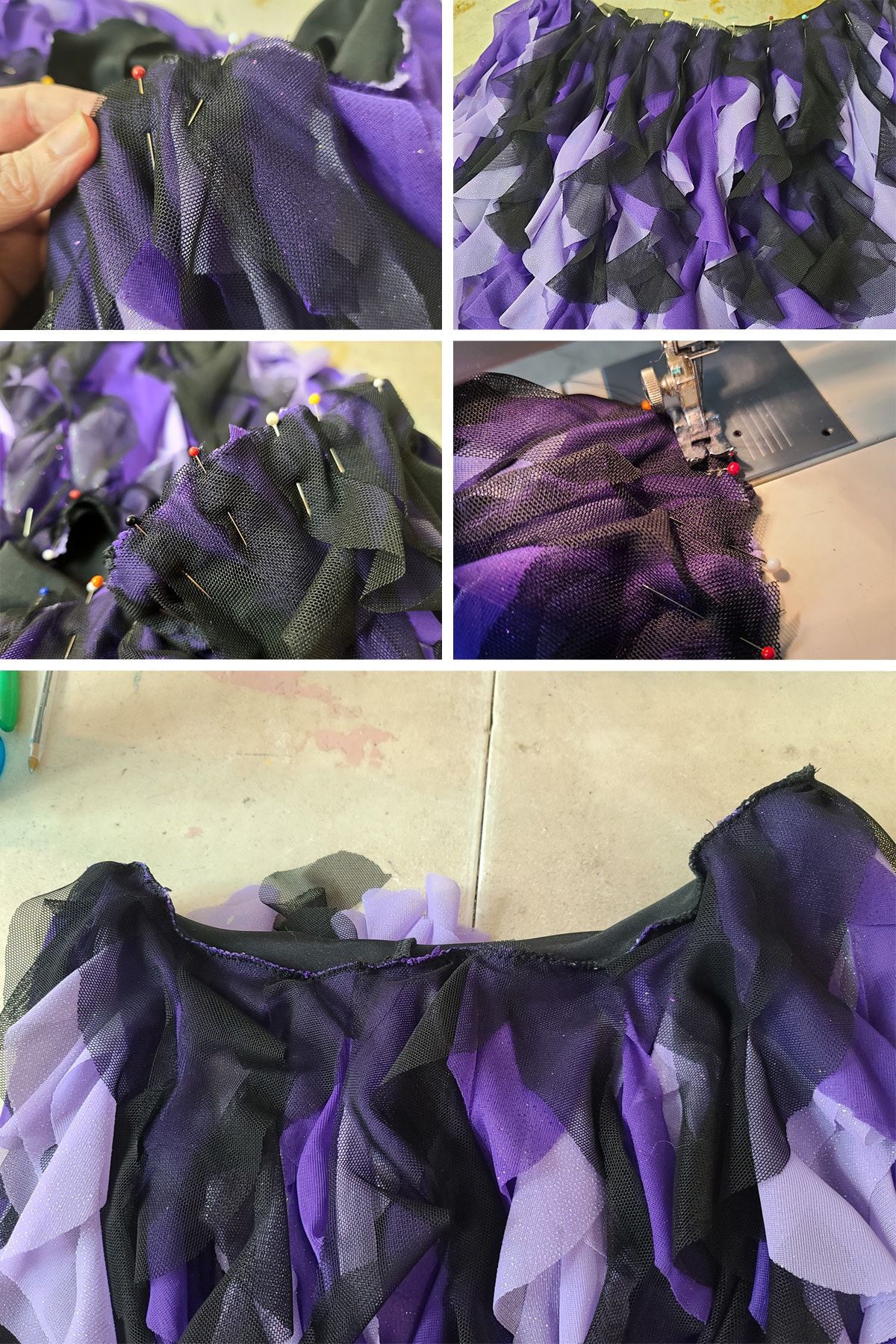
Before attaching the skirt section to the rest of the garment, check all of your stitching, ensuring that everything was caught where it's supposed to be.
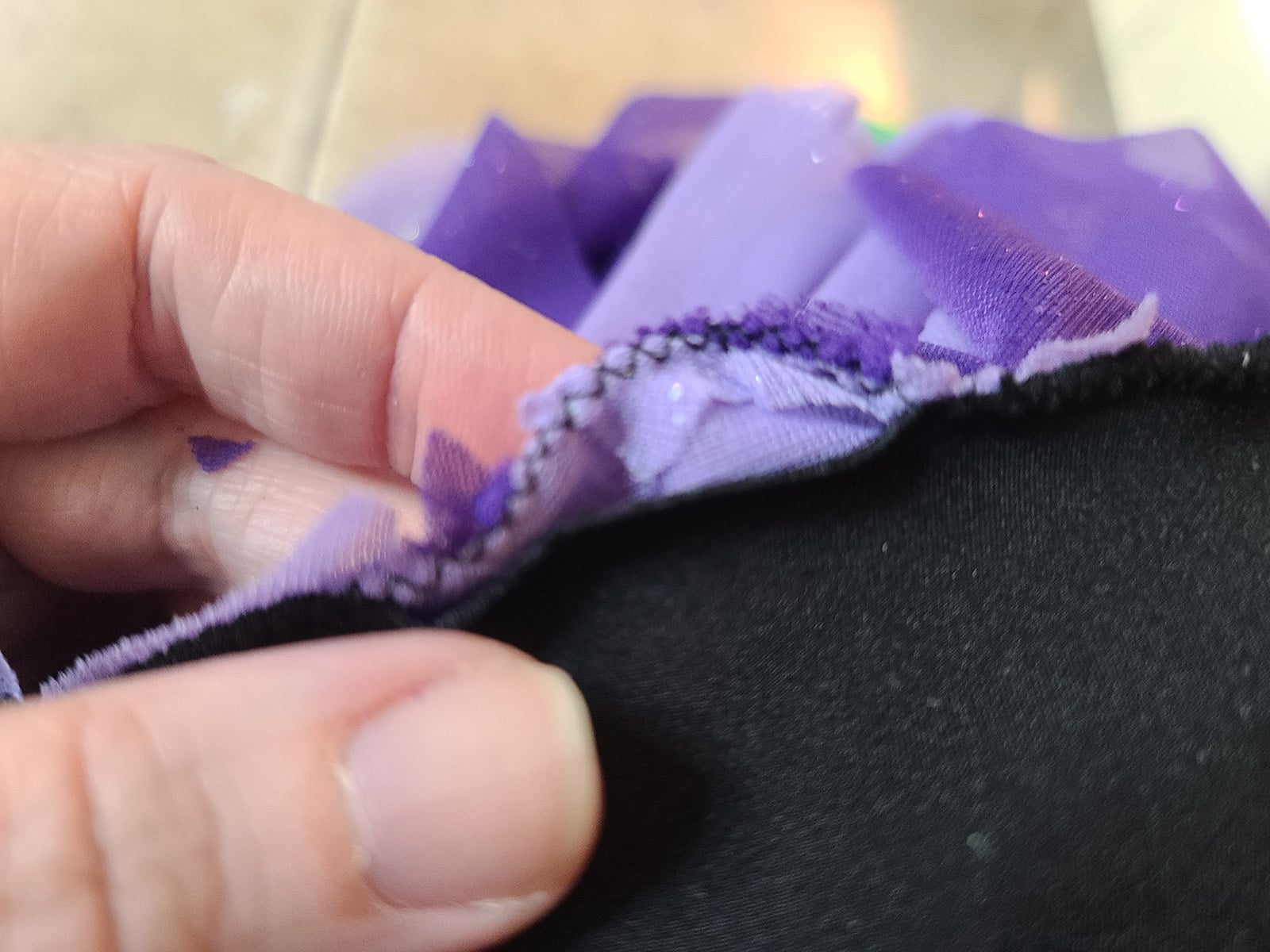
Sometimes you might not actually be stitching the ruffles to the base. Better to fix that early on, before extra layers are added / the garment is assembled.
Attach the rest of the garment as normal, just being careful to not catch any wild ruffles in the seams where they don’t belong. Take your time!

Final Waterfall Skirt Tips
- Always buy more fabric than you think you’ll need. Depending on the size of the wearer, the fullness of the ruffles, and the volume you’re going for, this can take an obscene amount of fabric.
- Seriously, I can’t emphasize this enough - your cutting does not need to be perfect, and neither does your pattern.
There is so much volume in this style of skirt, that you shouldn’t beat yourself up if you slip a bit, if your circles aren’t perfect, etc.
Add in the extra chaos of movement, of gravity - adding stretch - etc... and you just really have to accept that this is not going to be an exercise in perfection.
If you get it perfect, great - but literally no one but you will notice - or even know.

More Figure Skating Sewing Tutorials
Want some more skating related sewing content? Try these on for size:
Bodyshirts for Male Skaters
How to Draft Skating Skirt Patterns
Pull-on Figure Skating Skirts
How I Made That: Flames Skating Dress
How I Made That: The Pink & Black Skating Dress
How to Make Scrunchies
How I Made That: The 80's Dress Figure Skating Dress
How to Make Skate Covers
How to Make Soakers
Make a Basic Ice Skating Dress
Proper Care of Figure Skating Dresses
How I Made That: Art Deco Skating Dress
How I Made That: The Ursula Dress
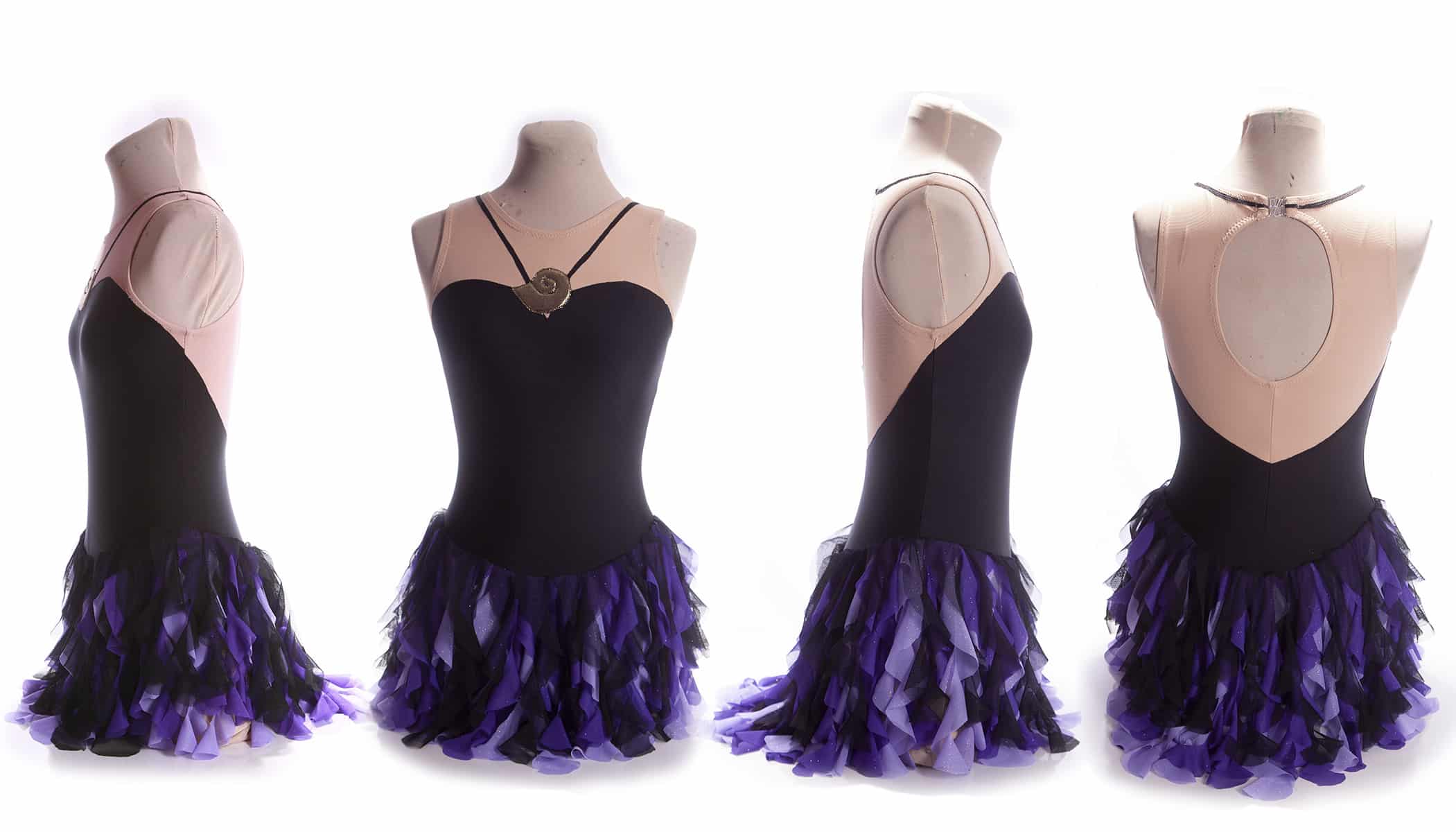
Share the Love!
Be sure to take some pics of your handiwork! If you post it to Bluesky, be sure to tag us - @SpandexSimplified.
Also, be sure to follow me on Pinterest, and subscribe to my Youtube Channel, so you never miss out on any of my nonsense. Well, the published nonsense, anyway!
Finally: If you loved this tutorial - or have any questions about it - please leave a comment below! I'll do my best to answer any questions you may have!



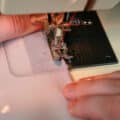


Hey, thanks for a wonderful blog and tutorial!
Can I ask if you remember roughly how much fabric (per colour) you used for this dress in particular; what the length and width of the ruffles were (in the end) and what size skater you were making this for?
Thanks again!
I think I bought 1.5 meters of each (3 colours), I don't remember the lengths and widths (they were varied), and it was for an adult XS.
Can i ask good fabrics to use that dont fray?all floaty fabrics i have found seem to fray badly?
Stretch Chiffon and stretch mesh are my go-tos.
OMG! Thank you for your detailed explanation of making the pattern for the spirals, especially how to make them a specific width and length. I'm doing a different style of skirt for a Halloween costume, but did need to know how to make each layer an (at least fairly) consistent amount shorter than the previous layer.